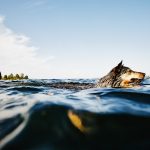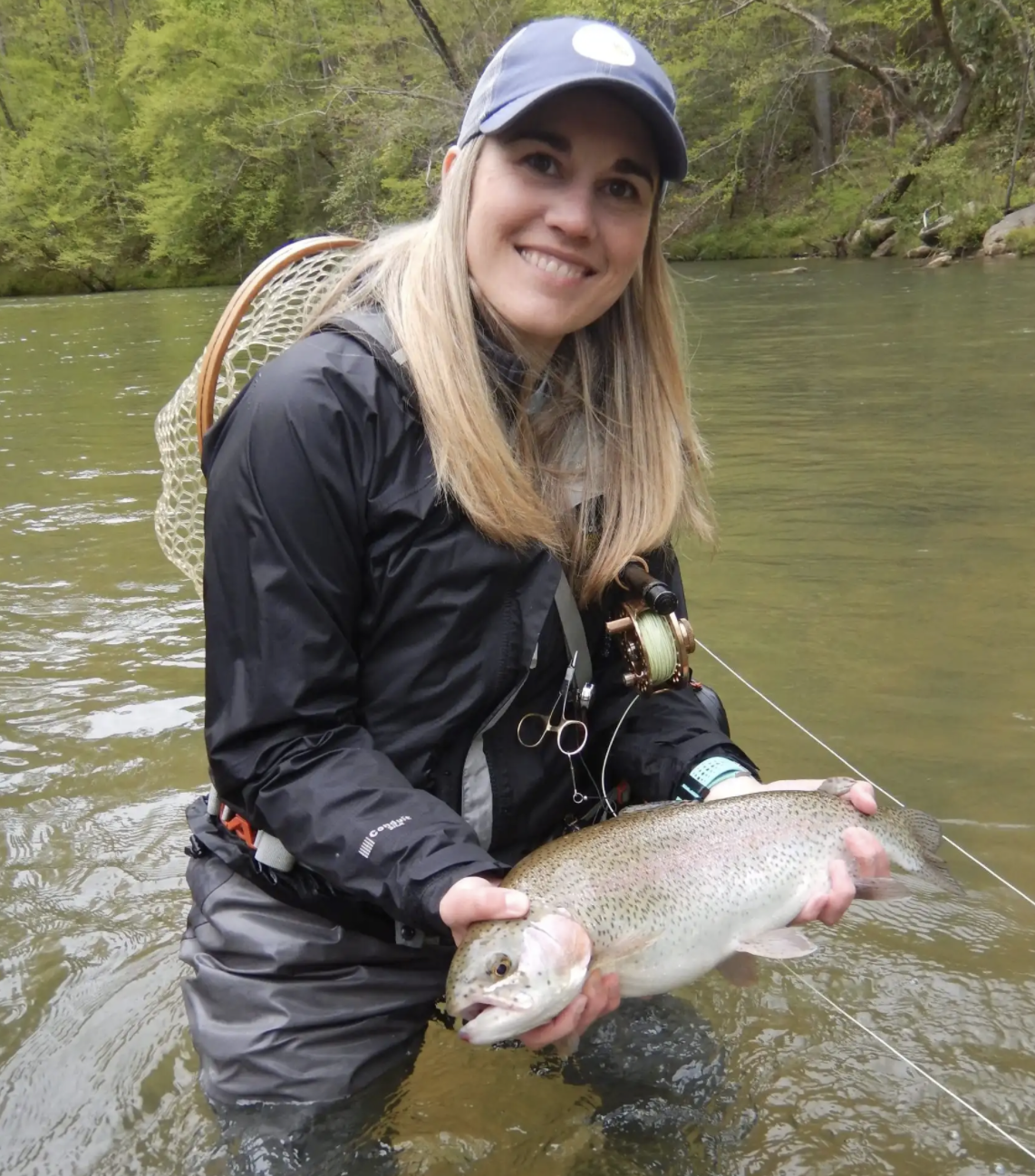
Intense summer heat and high humidity often drives people to cool down at the beach, the lake, the pool or in the shade. If you think it’s tough for people to cool off, it’s even harder for dog

While a human’s normal body temperature is 98.6°F, a dog’s normal temperature falls within a range of 99.5-102.5°F. That range accounts for different breeds, sizes, ages, and condition, among other variables. When a dog exercises outside in the summer heat, his core body temperature can rise above the normal range. When his temperature rises faster than he can cool off, a dog can develop a serious condition called heat-related illness (HRI).
Some dogs are at greater risk of HRI like ones that are overweight, sedentary, and used to living in the air-conditioned indoors. Dogs with shorter, flatter faces or thicker hair coats will also be challenged when exercising in hot, humid conditions.
Fortunately, there are steps you can take to help keep your dog cool in the summer heat while enjoying the outdoors together.

10 Tips For Helping Your Dog Keep Cool
- Check His Overall Health And Weight: Assess your dog’s current state of health. Review his weight and body condition score to determine if he needs to shed some weight. If he does, help him lose weight by identifying his diet and daily caloric needs with your veterinarian. Overweight dogs run a greater risk of HRI than those with an ideal weight.
- Acclimate Him Slowly To Rising Temperatures: Dogs that live indoors get used to air conditioning. To prepare your dog for outdoor summer fun, take him out for short walks throughout the day for about a week. Gradually increase his time outside as he starts to adjust. Keep in mind that every dog handles heat differently. Different body sizes, hair coat, body condition and the dog’s overall health status greatly influence the time required to acclimate to warmer temperatures.
- Get Him In Shape: If you plan to run, bike or hike with your dog then be sure to progressively condition him for the activity. Like humans, dogs need time to build up muscle-strength and overall stamina. Start your activity in short intervals and gradually increase the time and intensity as your dog’s endurance improves. Always consider your dog’s natural abilities and push only as hard as he can handle.
- Keep Him Hydrated: At a minimum, an active dog should consume as much water as he’s losing and more when exercising outside in the heat. For example, an active 44-pound dog can lose between .5 and 1.5 gallons of water per day.1 So how much water is enough for your dog? One helpful rule of thumb is to calculate your dog’s water intake through food consumption. Simply multiply the number of cups of dry food offered daily by three cups. So, three cups of food would mean an active dog should drink a minimum of nine cups (a little over 0.5 gallon) of water, and so on.
While outside, always keep plenty of cool water on hand for him to drink. And avoid letting your dog drink from mud puddles or saltwater. Puddles can contain harmful bacteria and saltwater is a dehydrator and can shut down your dog’s kidneys. - Prehydrate Before Big Outdoor Adventures: Consider prehydrating your dog three to five days leading up to a big outdoor activity. One way to prehydrate is to add water to his food at a 1:1 ratio and feed immediately so the kibble doesn’t soak up the water. Another strategy is water baiting or adding a small heap (1-2 tablespoons) of wet food to the bottom of a bowl and filling with water. Most dogs will gladly consume the water to reach the tasty food.

- Incorporate Water In Your Outdoor Activities: For example, if you like to trail run or hike with your dog, seek out paths near a stream, river or lake. Cool water helps reduce a dog’s core body temperatures much faster than air.
- Assess The Weather Before Heading Outside: Use the 140 rule of thumb. Add the temperature to the humidity percentage, and if it’s more than 140 consider waiting until it’s cooler for vigorous activities. For example, if it’s 80°F with a humidity of 70%, that’s a total of 150 so take it easy outside with your dog and monitor him closely. Another option is to monitor the heat index and to be cautious if it exceeds 75.
- Assess The Terrain: Some environments can cause dogs to work harder. Running in sand, through mud, or at high elevations can be more challenging than exercising on a flat, grassy field. The harder your dog exercises, the more heat his body produces. That internal heat is compounded by hot outdoor temperatures and high humidity. The combination makes it really hard for dogs to cool down.
- Take Frequent Breaks: Take frequent breaks during outside adventures to let your dog rest in the shade and hydrate. The ideal resting spot also has a breeze that will help your dog cool.
- Educate Yourself: Knowing how to tell if your dog is overheating and what to do if he is struggling to cool down is critical. Below is a helpful reference guide that outlines the three stages of HRI including signs and actions to take. To learn more about HRI, visit Eukanuba.com/HRI.

STAGE 1 – HEAT STRESS
| Clinical Signs | Actions to Take |
|---|---|
| Less animated behaviorVisibly tired or moving at a slower paceChanges in the dog’s focus or readinessChange in attitude (ie: seems apprehensive)Excessive pantingPasty saliva in the mouthIncreased thirstFeels overly warm to the touchTongue excessively protruding out with a flattened endCheeks pulled back revealing the full arcade of the teeth including the molarsBrick red mucous membranesHeat cramps or muscle spasms | Take a break from the activity at hand. Sit in a shady area with a cool breeze and provide your dog with lots of water.Apply cool water to his paw pads and underbelly.Rinse out his mouth to remove any pasty saliva from his gums and tongue.Dab rubbing alcohol-soaked pads to the pinnae of the ears, in his armpits and in the groin area. The alcohol placed in these areas will help cool the surface blood immediately.Do not start exercising your dog until he is fully recovered, but even then, it might be best to rest him until the next day.Consult your vet for additional instruction. |
STAGE 2 – HEAT EXHAUSTION
| Clinical Signs | Actions to Take |
|---|---|
| Any of the signs from Stage 1, plus additional signs: Weakness or stumbling Mentally aware but too tired to react Excessive panting becomes uncontrollable Significant thirst Sunken, dry eyes Dry mouth, gums and nose Vomit or diarrhea Lack of skin elasticity Muscle tremors | Get your dog to the nearest vet immediately. Before heading to the vet, place a cool, wet towel on the bottom of his kennel. Be sure he is in a crate or other area large enough for him to lay on his side. It is important that your dog stretch out so there is maximum heat dissipation. Apply cool water to his paw pads and underbelly. Dab rubbing alcohol-soaked pads to the pinnae of the ears, in his armpits and in the groin area. If you have a fan on the cage door, turn it on. Absolutely do not put the dog in extremely cold water and never put ice on his skin. That extreme cold causes surface blood vessels to shrink and increases the risk of both dehydration and heatstroke. |
STAGE 3 – HEAT STROKE
| Clinical Signs | Actions to Take |
|---|---|
| Any of the signs from Stage 1 and 2, plus additional signs: Significant slowness or lack of coordination Weakness in the hind end Wobbly and unsteady Unresponsive or confused Incessant or noisy panting Dark urine or lack of urine Seizures Head tremors Shock Collapse Coma | Get your dog to the nearest vet immediately. Follow the before-mentioned actions from Stage 2 before you begin your drive to the nearest vet. |
1 https://www.workingdogmagazine.com/fueling-performance-keep-your-dog-hydrated/





